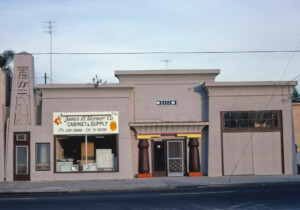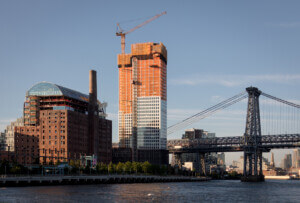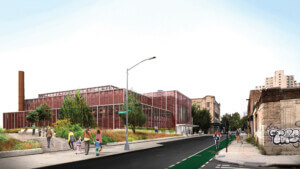By geography, economics, even postal demarcation, La Jolla, California, stands apart from the city of San Diego, of which it is nonetheless a constituent neighborhood. Located 12 miles north of downtown, La Jolla is a breathtaking place, known for its clement weather, glinting sunlight, sandy beaches, and craggy sandstone cliffs that elevate the village above the Pacific Ocean. It is also home to the Louis Kahn–designed Salk Institute, a magnet for architectural pilgrimage if ever there was one and certainly one of the best examples of making the most of a site of exceptional natural beauty. It raises the question, what do you do when you stand at the edge of eternity? The answer: Gaze into it.
The Museum of Contemporary Art San Diego (MCASD), whose foundation building is also in La Jolla, has never enjoyed the same level of prestige. (There is another location in downtown, a kunsthalle-style exhibition space in the former baggage building of the Santa Fe Depot train station.) Despite being, like Salk, perched on a precipice above the rolling waves, the museum never fully embraced its enviable location. The one exception to this (and it’s a big exception) is 1˚2˚3˚4˚, a 1997 installation by Robert Irwin that cuts three square voids into the tinted windows of a west-facing rear gallery, offering panoramic views of the seaside. Irwin’s work makes the viewer aware of the phenomenology of light and how much of an impact any mediation of it has. Through the tinted glass, the ocean and the palm trees and the strollers on the shore appear subdued. Peer through the holes, however, and you are confronted with the un-adulterated photons of our raging star and the briny tang of the sea breeze, which slaps you in the face like a wet fish.
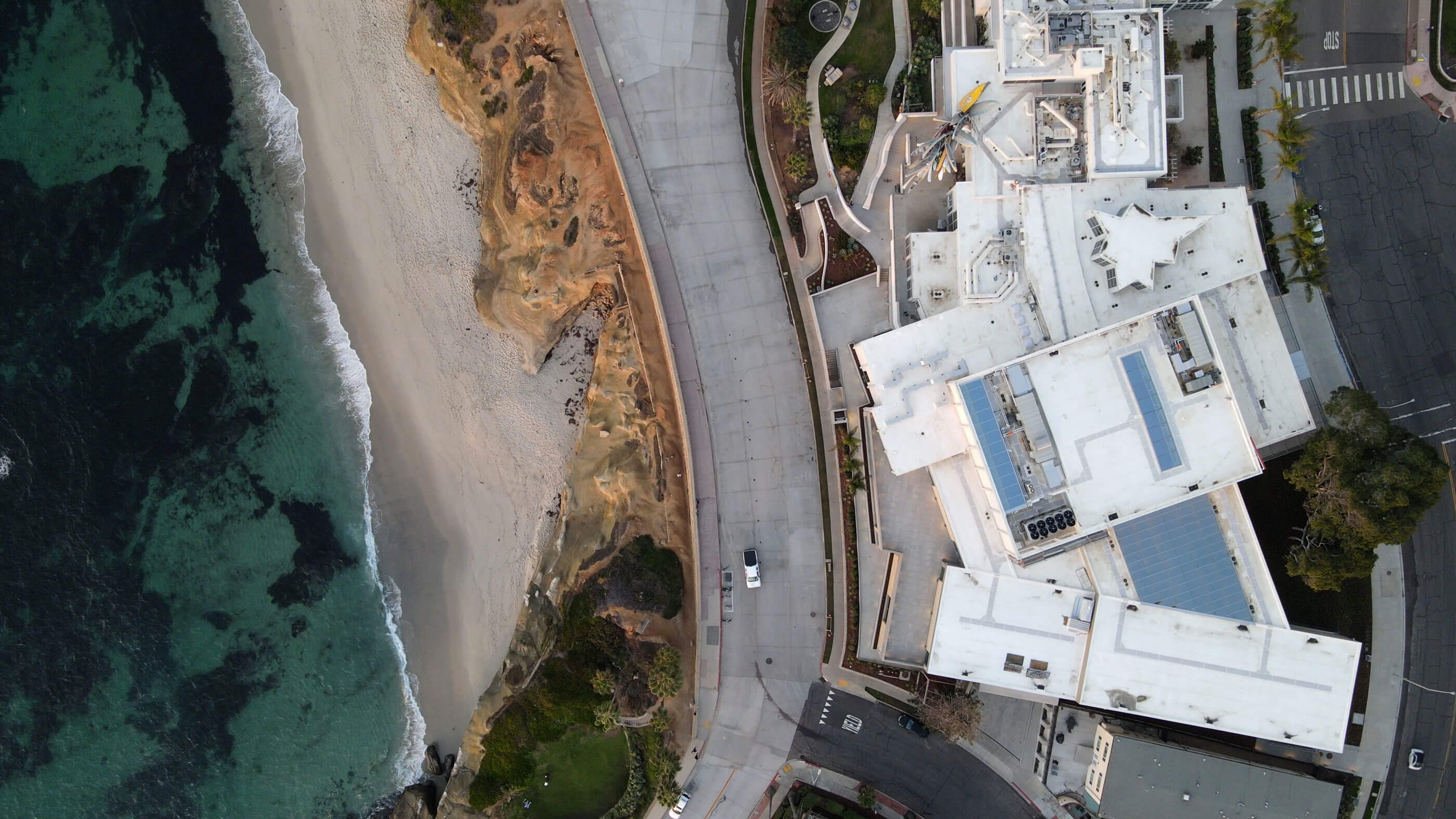
In 2014, MCASD hired Selldorf Architects of New York to renovate and expand its La Jolla HQ. Catching up with Salk was no doubt part of the equation, as was adding enough space to showcase the museum’s impressive permanent collection and making the institution a more inviting and accessible place for all. MCASD’s first home, when it was founded in 1941 as The Art Center in La Jolla, was the former residence of Ellen Browning Scripps (one of the town’s foremost philanthropists), a 1916 house designed by noted early modernist architect Irving Gill. Over the years, the house went through a number of renovations and expansions, several by local firm Architects Mosher Drew from 1950 to 1980, which added an auditorium that housed the La Jolla Music Society, among other programs. In 1996, Venturi Scott Brown and Associates (VSBA) added a gift shop, a cafe, an entry lobby known as the Axline Court, and two colonnades of short, plump Doric columns topped by steel pergolas that fronted the Gill house and shaded the entrance.
When Selldorf’s design was unveiled in 2018, there was a tremendous outcry from the architecture community. The proposal removed VSBA’s colonnades, thus exposing the Gill house, and chopped away one bay of its addition to make room for a new lobby. Two years before, Robert Venturi and Denise Scott Brown had been recognized, perhaps belatedly, with the AIA Gold Medal, the first time the award was given to a couple. At the time, postmodernist architecture was enjoying something of a renaissance, particularly among the younger set, who, oedipally or not, were looking to buck the blandness of the neo-modern moment. Several screeds against Selldorf’s design were published (including in this publication) decrying the violation of this or any VSBA fabric, but the argument may have been overstated. As important as Venturi and Scott Brown are to architectural history and discourse, they did not build their reputation on museum design.
While objections to Selldorf’s proposal didn’t derail it, they did motivate Annabelle Selldorf to reach out to Scott Brown. The two have reportedly struck up a friendly correspondence, a good thing, considering Selldorf is also updating the National Gallery in London, including its VS-BA-designed Sainsbury Wing. And to look at the completed work at MCASD (and I admit I never visited its previous incarnations), it’s hard to find much to complain about.
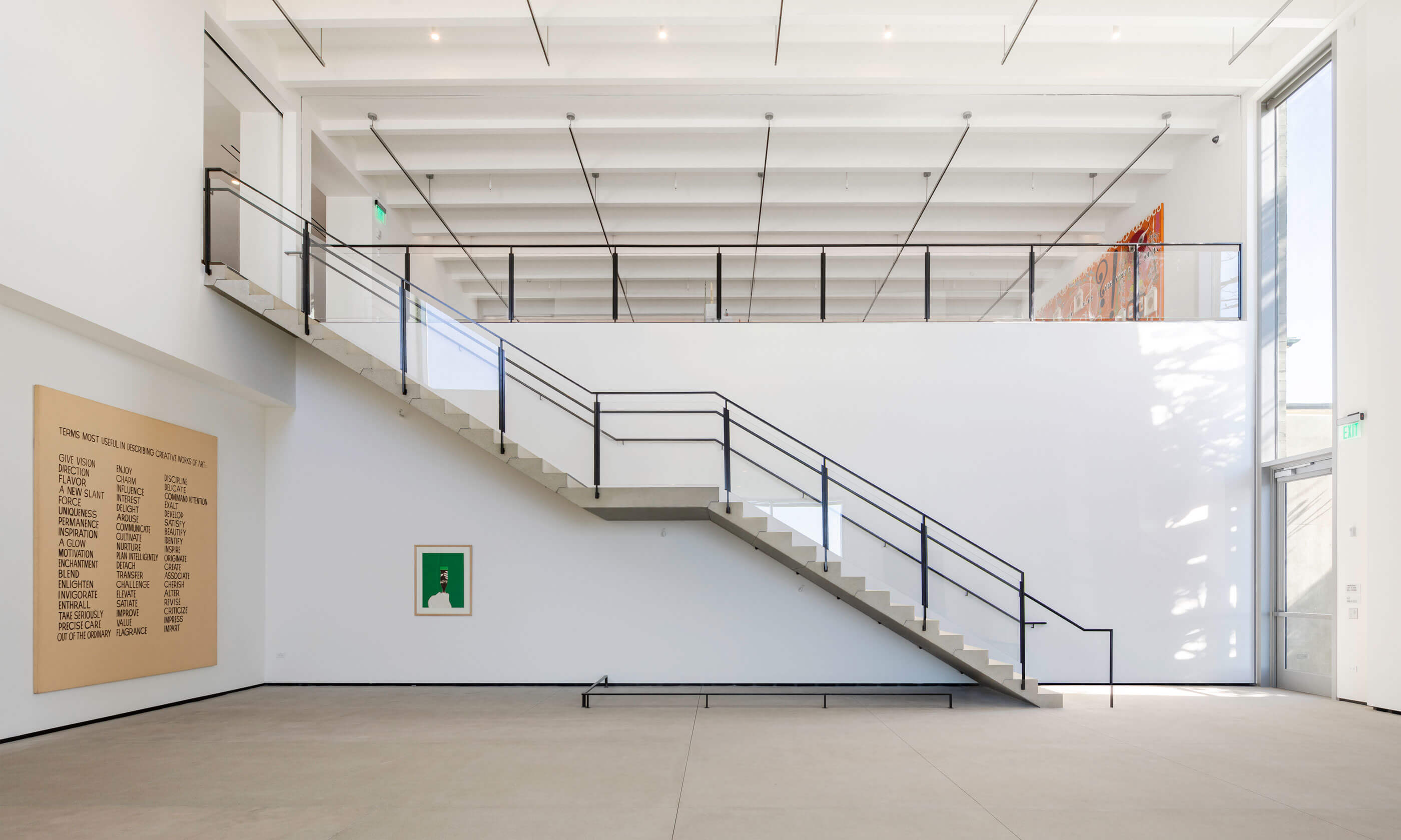
Selldorf’s approach is one of, as her firm’s architectural statement asserts, “harmonious contrast.” The Gill house and VSBA addition are white stucco on the exterior with rectangular windows and large arched apertures. Selldorf’s expansion is board-formed concrete and travertine panels with large rectangular windows and aluminum brise-soleils. Its variegated colors closely resemble La Jolla’s sandstone cliffs. The Mosher Drew–designed auditorium, now the Strauss Main Gallery, juts out over this assembly, its extra height soaring far above what current zoning allows. Viewed from the ocean side, where it spills down the cliff face, MCASD’s accretion of parts appears like a condensed version of a seaside village, which, all things considered, is appropriate for its location in a seaside village.
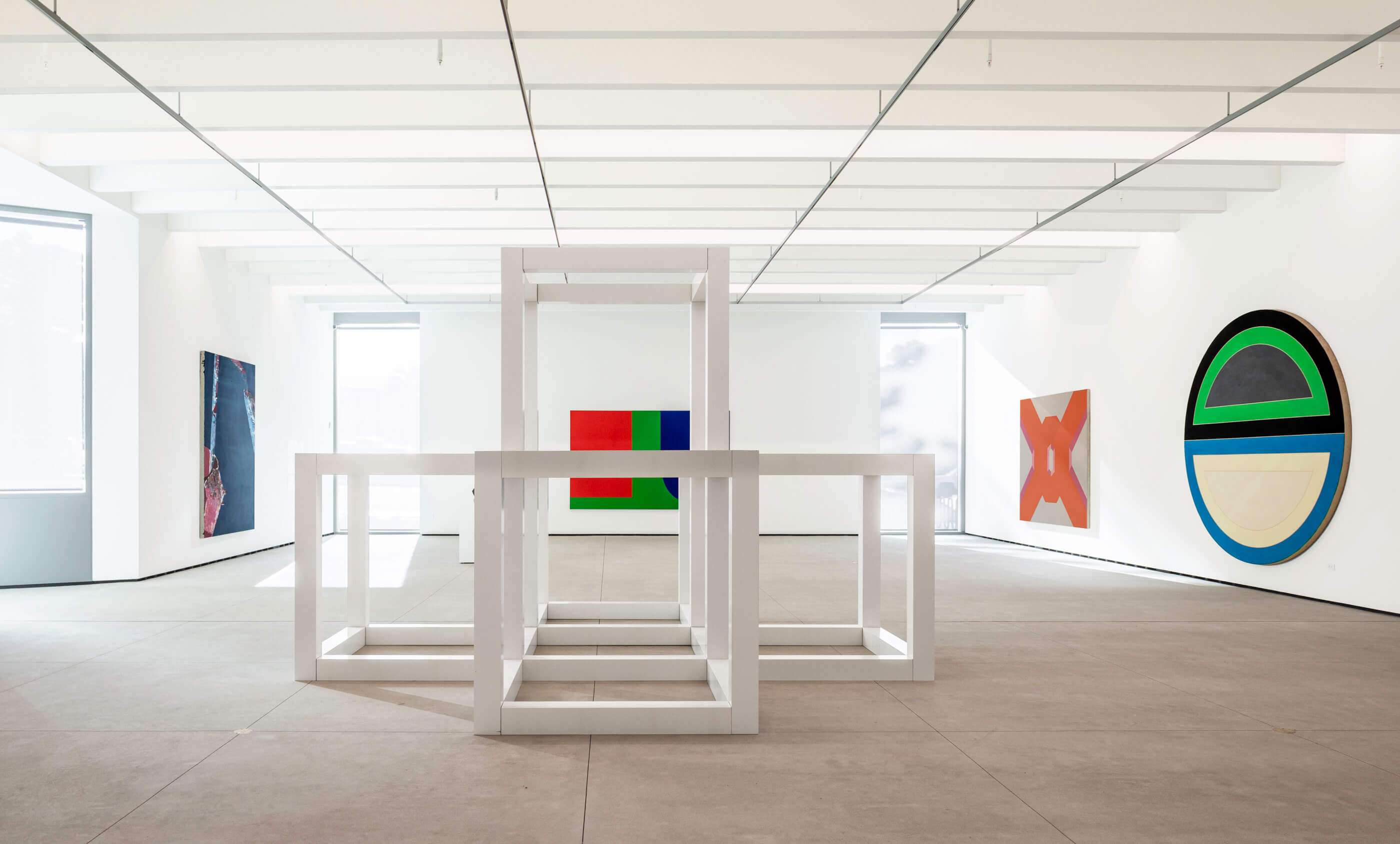
Inside, the existing terrazzo floors give way to concrete and maple wood floors in the addition. But this, along with the varying smells, is the only indication that you are passing from old to new. Otherwise, the spaces flow together more or less seamlessly. The fact that each gallery is a different size, and often a different shape (trapezoidal galleries mark the collision of Selldorf’s spaces with those in-situ), means that the accreted nature of the building never really becomes too glaringly apparent or, at any rate, a problem. This variety certainly will give MCASD’s curators a lot of possibilities to play with.
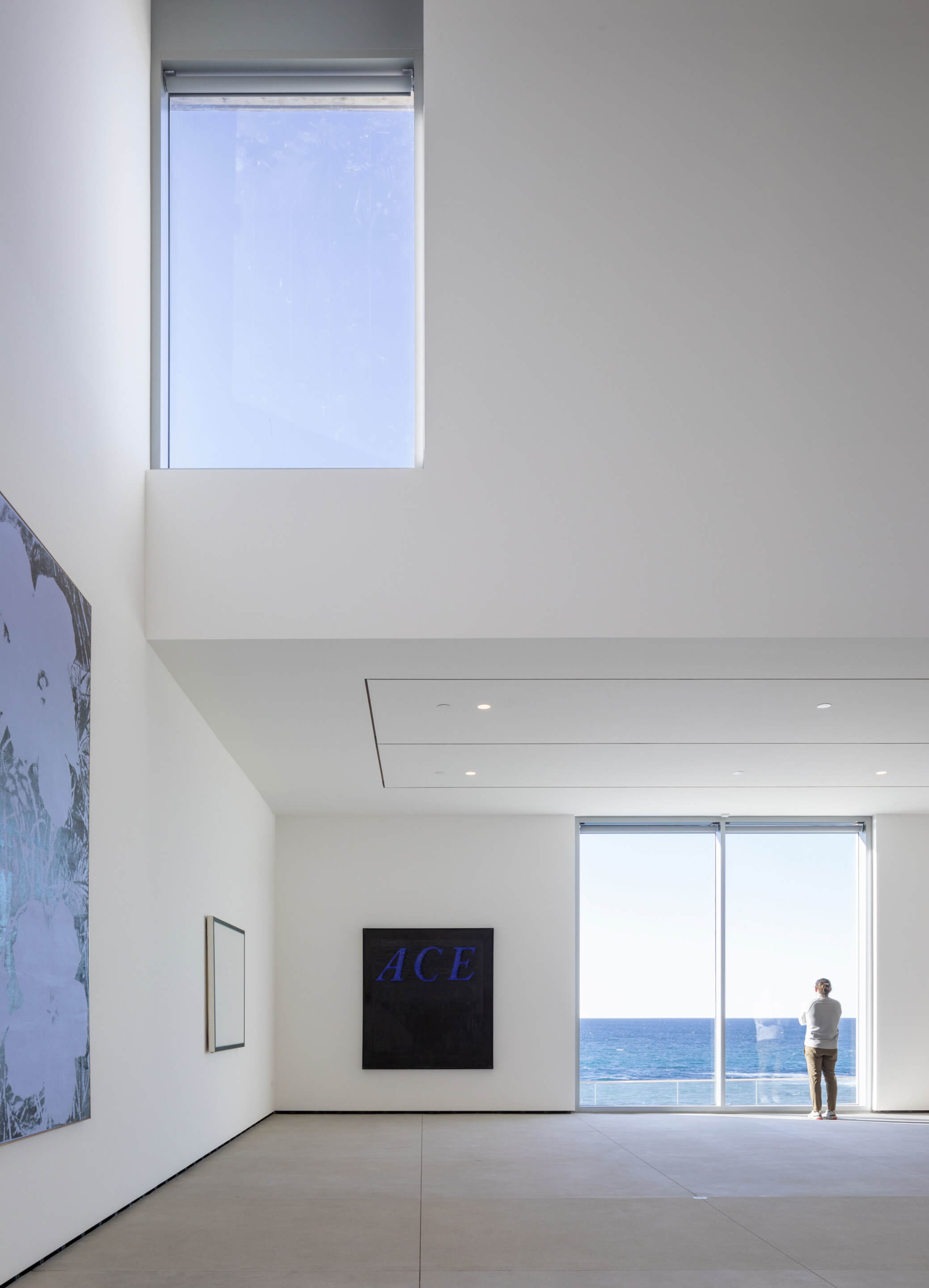
More remarkable is the proliferation of windows and daylight throughout the project, which is taken to an extreme. On the Prospect Street side, large storefronts look out onto the village—no doubt part of the effort to make the museum more inviting and accessible. To the south, a full-height window, tilted slightly, exhibits the beach-shack vernacular of the neighboring Scripps Inn. And on the west, of course, large panels of glazing open the interior to the mesmerizing expanse of the Pacific. It’s not Salk, but it’s not bad. How refreshing to walk through a museum that is so radically open to its surroundings! Looking outside and having one’s eyes cleansed by daylight and the sight of wind whipping the palms is a true antidote to the exhaustion that can set in after too much time is spent in an insular temple of art. I do wonder whether the windows will be kept as open as they were during the press tour. After all, daylight—even daylight passing through cutting-edge glazing—has its degrading effects on artworks. Being able to peer inside from the street is also a boon, as it does seem reasonable to suspect that seeing what’s there will break down some of the more intimidating aspects of the museum experience, thus making MCASD easier to enter than your average art fortress.
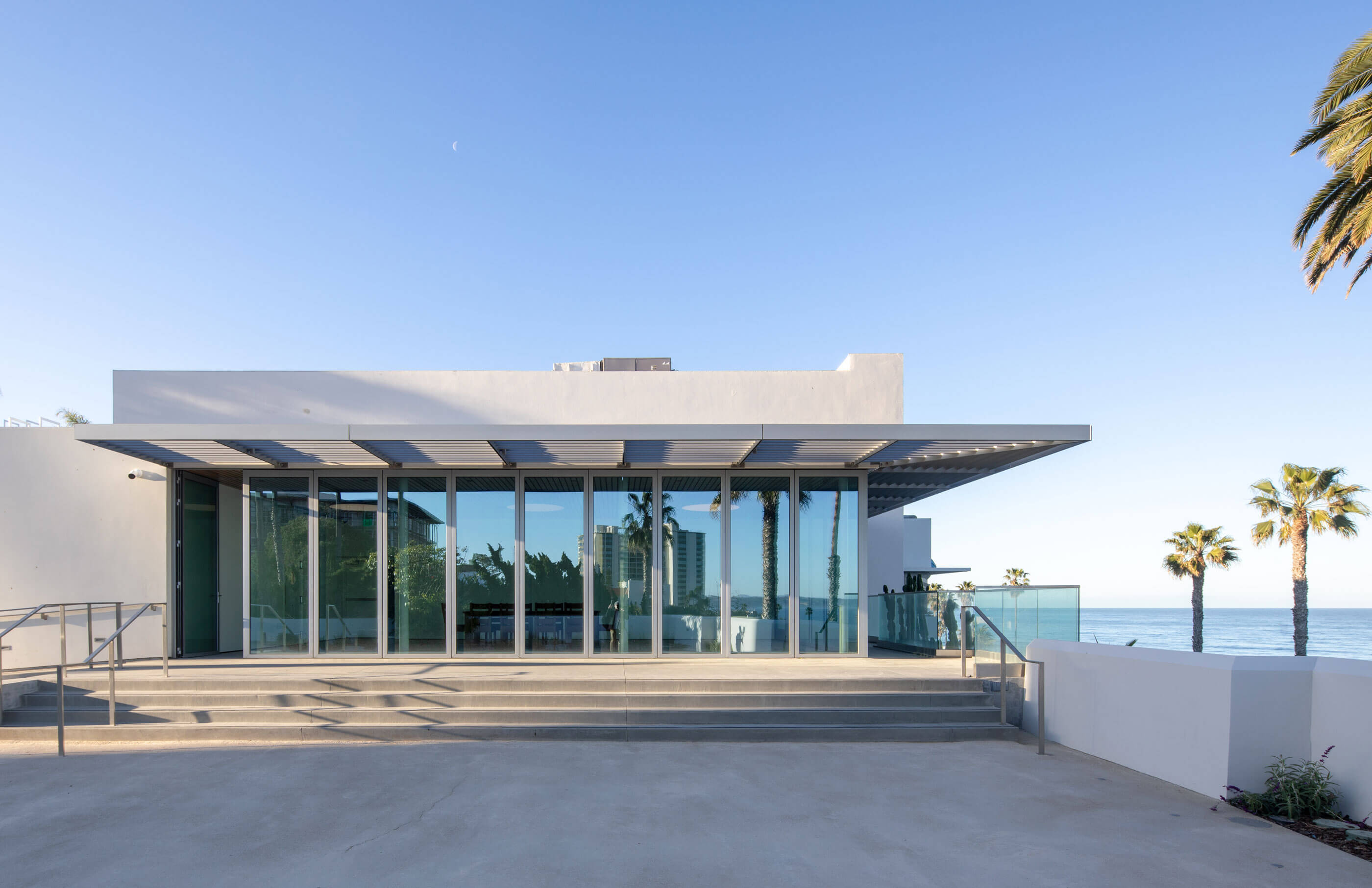
On the other hand, La Jolla itself isn’t the most accessible or inviting place. Locals, in fact, brag about its inaccessibility. “There are only two ways in and out,” one put it to me. And so, though the architecture has done its job admirably, it’s hard not to walk away feeling a little twinge of irony. As with the sculpture that has long occupied a place of honor at MCASD’s front, Jonathan Borofsky’s shout-out to workers everywhere, Hammering Man, one questions what this very accessible museum is doing in the Beverly Hills of San Diego.
Design architect: Selldorf Architects
Executive architect: LPA
Architect of record: Alcorn & Benton
Location: La Jolla, California
General contractor: Level 10 Construction
Construction managers: Gafcon, HR Weatherford Company
Structural design engineer: Guy Nordenson and Associates
Structural engineer of record for Approvals: Simpson Gumpertz & Heger
MEP: Buro Happold
Landscape architect: LPA
Civil engineer: LPA
Lighting: Renfro Design Group








